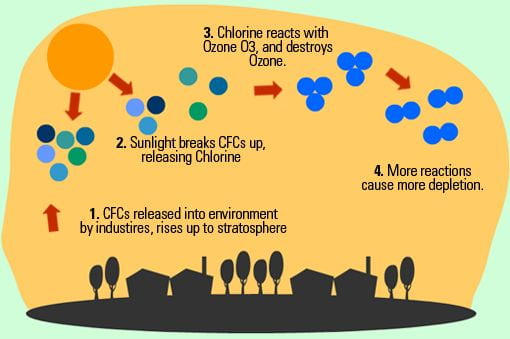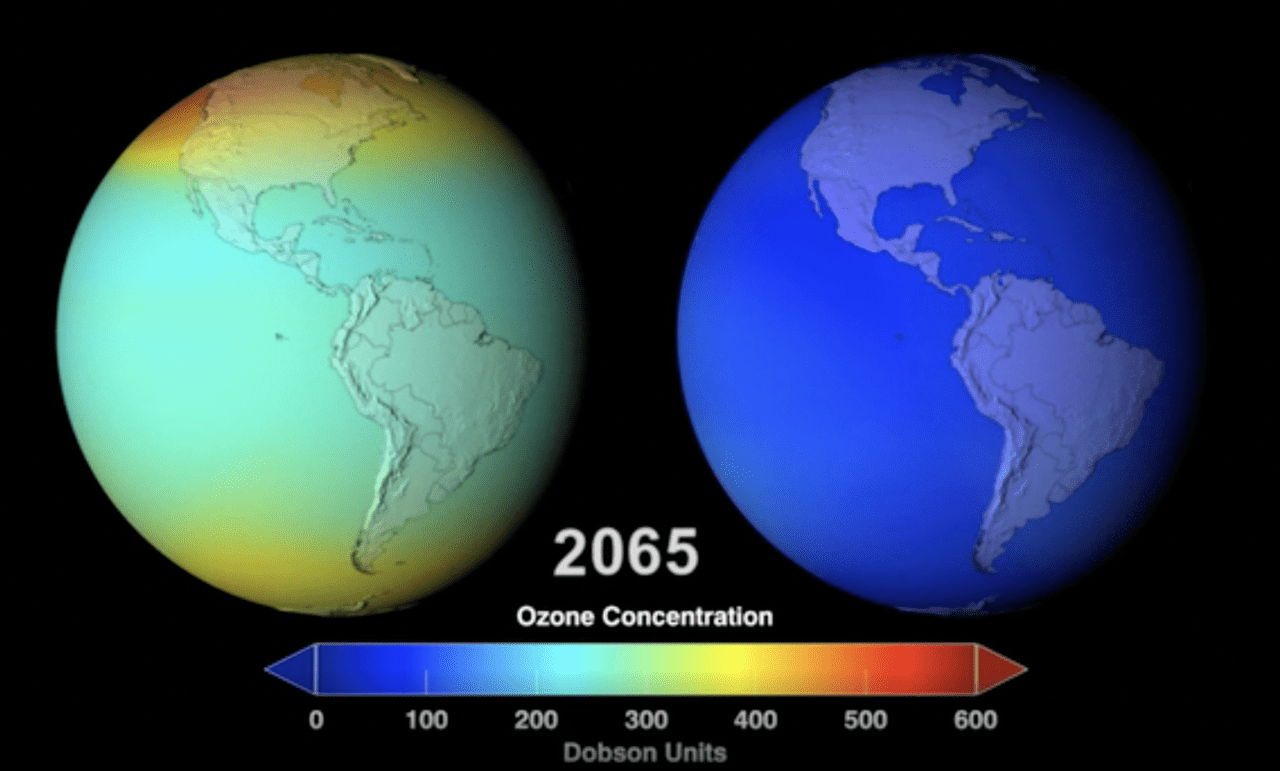
Credit: eschooltoday.com 
Credit: climate.nasa.gov
In the 1970s, concerns about the effects of ozone-depleting substances (ODS) on the stratospheric ozone layer prompted several countries, including the United States, to ban the use of chlorofluorocarbons (CFCs) as aerosol propellants. However, global production of CFCs and other ODS continued to grow rapidly as new uses were found for these chemicals in refrigeration, fire suppression, foam insulation, and other applications. The repeated use of such chemical substances has caused a hole in the ozone layer in Antarctica and has weakened the ozone layer in the artic; this hole in the atmosphere allows for the increased influx of UV rays (Union of Concerned Scientists, 2017).
These intense and unfiltered UV rays can cause detrimental health effects; from skin cancer to damage to ecosystems, the increase of UV rays damages cells by damaging the cellular DNA.
The Montreal Protocol, which includes banning ozone-damaging chemicals, has effectively prevented any further damage to the ozone layer; however, it will take decades for the ozone layer to fully recover [1, 2].
Robotic Solutions for Ozone Depletion
Unfortunately, there are no current robotic solutions to prevent the further thinning of the ozone layer or robotic preventative measures to limit the effects of ODS in the environment. Perhaps the lack of robotic solutions is due to the limitations of current robotic technologies. For instance, the ozone layer is much less accessible compared to other critical areas, such as the ocean or the Amazon rainforest; the ozone layer is much less tangible compared to other essential areas, it is much more difficult to physically interact with the ozone layer compared to other areas closer to Earth.
To see robotic solutions developed for ozone depletion, click here.
To look into the research publications about ozone depletion, click here.
| Prev: Chemical Pollution | Next: Atmospheric Particle Pollution |
References:
[1] Velders, G. J. M., Andersen, S. O., Daniel, J. S., Fahey, D. W., & Mcfarland, M. (2007). The importance of the Montreal Protocol in protecting climate.
[2] McKenzie, R. L., Aucamp, P. J., Bais, A. F., Björn, L. O., Ilyas, M., & Madronich, S. (2011). Ozone depletion and climate change: impacts on UV radiation. Photochemical & Photobiological Sciences, 10(2), 182–198.